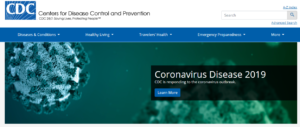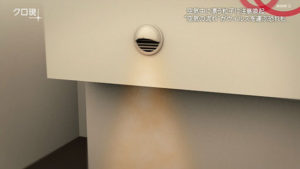WHOによるエアロゾルの見解まとめ
ウイルスを含むエアロゾルまたは飛沫が吸入されるか、目、鼻、または口に直接接触すると、人が感染する可能性があります。
この病気はSARS-CoV-2ウイルスによって引き起こされることを私たちは知っています。SARS-CoV-2ウイルスはいくつかの異なる方法で人々の間で広がります。
ウイルスは、感染した人が咳、くしゃみ、話し、歌ったり、呼吸したりすると、小さな液体粒子で口や鼻から広がる可能性があります。これらの粒子は、大きな呼吸器飛沫から小さなエアロゾルまでさまざまです。
現在の証拠は、ウイルスが主に互いに密接に接触している人々の間で、通常は1メートル(短距離)以内に広がることを示唆しています。
ウイルスを含むエアロゾルまたは飛沫が吸入されるか、目、鼻、または口に直接接触すると、人が感染する可能性があります。
ウイルスはまた、人々がより長い時間を過ごす傾向がある、換気が不十分な、および/または混雑した屋内環境で広がる可能性があります。これは、エアロゾルが空中に浮遊したままであるか、1メートル(長距離)を超えて移動するためです。
また、手を掃除せずに目、鼻、口に触れると、ウイルスに汚染された表面に触れることで感染する可能性があります。
ウイルスの蔓延と、どの設定が最も危険であるか、そしてその理由をよりよく理解するために、さらなる研究が進行中です。出現しているウイルスの亜種と、なぜいくつかがより伝染しやすいのかを研究するための研究も進行中です。
症状があるかどうかに関係なく、感染した人は伝染する可能性があり、ウイルスは彼らから他の人に広がる可能性があります。
検査データによると、感染した人々は、症状が現れる直前(つまり、症状が現れる2日前)と病気の初期に最も感染性が高いようです。 重度の病気を発症した人は、より長く感染する可能性があります。
症状を発症したことがない人はウイルスを他の人に感染させる可能性がありますが、これがどのくらいの頻度で発生するかはまだ明らかではなく、この分野でさらに研究が必要です。
どちらの用語も、症状のない人を指します。 違いは、「無症候性」とは感染しているが症状がまったく発生していない人を指し、「無症候性」とはまだ症状が発生していないが後で症状が発生する感染者を指します。
人々が長期間互いに近接している状況では、感染のリスクが高まります。 屋内の場所、特に換気が不十分な場所は、屋外の場所よりも危険です。 運動中に歌ったり、激しく呼吸したりするなど、より多くの粒子が口から排出される活動も、感染のリスクを高めます。
「3つのC」は、これについて考えるのに便利な方法です。 彼らは、COVID-19ウイルスの感染がより簡単に広がる設定について説明しています。
混雑した場所;
特に人々が互いに非常に近くで会話をしている場合、密接な接触の設定。
換気の悪い密閉された空間。
COVID-19感染のリスクは、これらの「3C」が重複する場所で特に高くなります。
人々がCOVID-19の治療を受けている医療施設では、エアロゾル生成手順と呼ばれる医療処置中に感染のリスクが高くなります。 これらは非常に小さな液滴を生成する可能性があり、それは長期間空中に浮遊したままで、会話距離(通常は1メートル)を超えて広がる可能性があります。
これが、これらの手順を実行する医療従事者またはこれらの手順が実行される環境で、呼吸器などの適切な個人用保護具の使用を含む、特定の空中保護措置を講じる必要がある理由です。 これは、これらの手順が実行されているエリアへの訪問者が許可されない理由でもあります。
We know that the disease is caused by the SARS-CoV-2 virus, which spreads between people in several different ways.
The virus can spread from an infected person’s mouth or nose in small liquid particles when they cough, sneeze, speak, sing or breathe. These particles range from larger respiratory droplets to smaller aerosols.
- Current evidence suggests that the virus spreads mainly between people who are in close contact with each other, typically within 1 metre (short-range). A person can be infected when aerosols or droplets containing the virus are inhaled or come directly into contact with the eyes, nose, or mouth.
- The virus can also spread in poorly ventilated and/or crowded indoor settings, where people tend to spend longer periods of time. This is because aerosols remain suspended in the air or travel farther than 1 metre (long-range).
People may also become infected by touching surfaces that have been contaminated by the virus when touching their eyes, nose or mouth without cleaning their hands.
Further research is ongoing to better understand the spread of the virus and which settings are most risky and why. Research is also under way to study virus variants that are emerging and why some are more transmissible.
Whether or not they have symptoms, infected people can be contagious and the virus can spread from them to other people.
Laboratory data suggests that infected people appear to be most infectious just before they develop symptoms (namely 2 days before they develop symptoms) and early in their illness. People who develop severe disease can be infectious for longer.
While someone who never develops symptoms can pass the virus to others, it is still not clear how frequently this occurs and more research is needed in this area.
Both terms refer to people who do not have symptoms. The difference is that ‘asymptomatic’ refers to people who are infected but never develop any symptoms, while ‘pre-symptomatic’ refers to infected people who have not yet developed symptoms but go on to develop symptoms later.
Yes, any situation in which people are in close proximity to one another for long periods of time increases the risk of transmission. Indoor locations, especially settings where there is poor ventilation, are riskier than outdoor locations. Activities where more particles are expelled from the mouth, such as singing or breathing heavily during exercise, also increase the risk of transmission.
The “Three C’s” are a useful way to think about this. They describe settings where transmission of the COVID-19 virus spreads more easily:
- Crowded places;
- Close-contact settings, especially where people have conversations very near each other;
- Confined and enclosed spaces with poor ventilation.
The risk of COVID-19 spreading is especially high in places where these “3Cs” overlap.
In health facilities where people are receiving treatment for COVID-19, there is an increased risk of infection during medical procedures called aerosol generating procedures. These can produce very small droplets that can stay suspended in the air for longer periods of time and spread beyond conversational distances (typically 1 meter). This is why health workers performing these procedures or in settings where these procedures are performed should take specific airborne protection measures, including using appropriate personal protective equipment such as respirators. This is also why visitors are not permitted in areas where these procedures are being performed.



